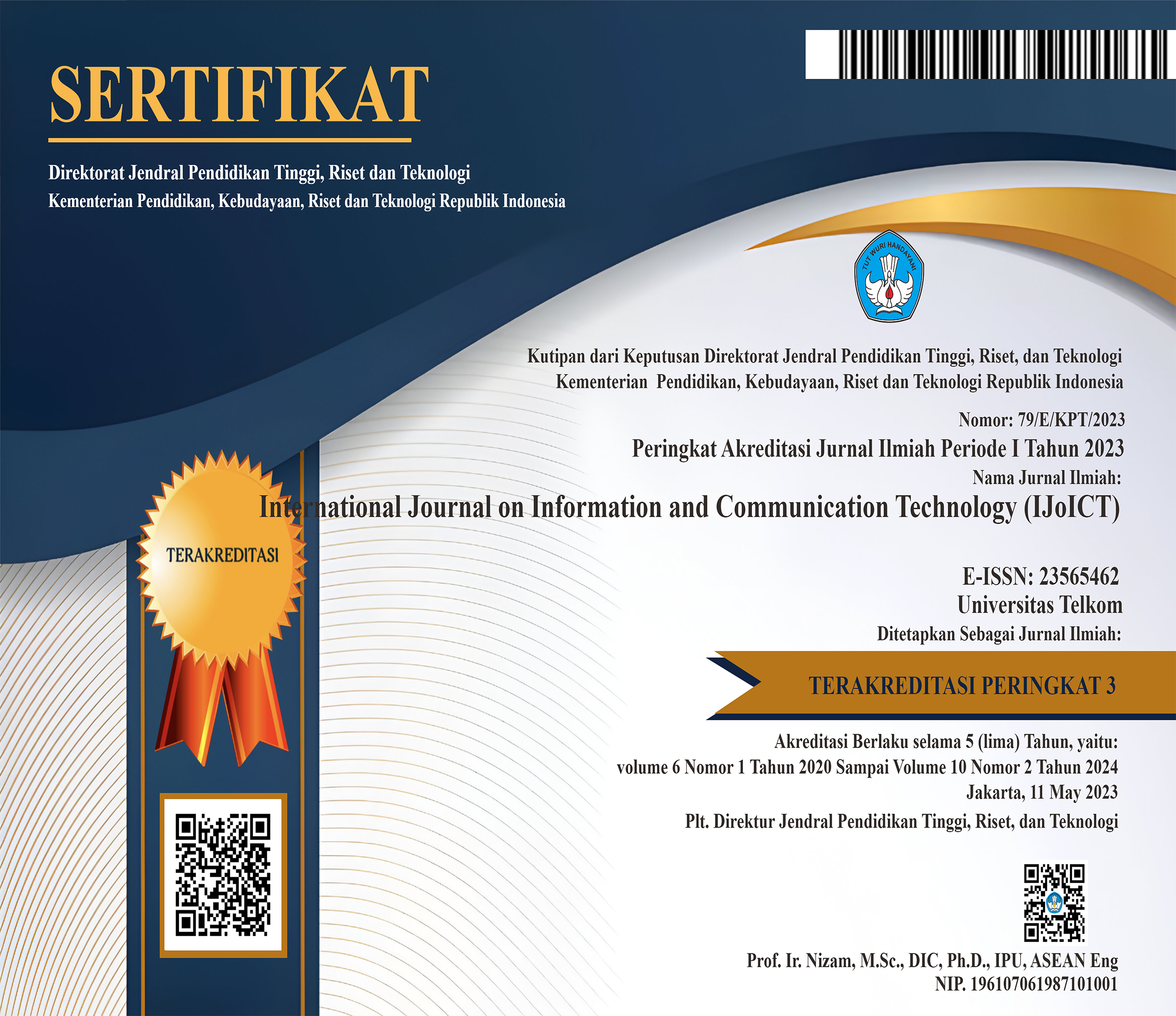The Development of High Availability Database Infrastructure for OSS Projects with Monitoring Systems in Cloud Computing Environments
 Abstract views: 86
,
Abstract views: 86
,
 pdf downloads: 65
pdf downloads: 65
Abstract
This study addressed a critical problem in the Kominfo's Operation Support System (OSS) project, which significantly impacted business operations. The outage of the MongoDB database, a vital component of OSS, resulted in server crashes and data damage. To overcome this issue, the OSS team initiated a project to migrate to PostgreSQL for high availability and improved database performance. The implementation involved the use of HA PostgreSQL technology, with multiple connected servers sharing data in real-time. Through functional and performance testing, the study has demonstrated that the HA PostgreSQL system increased database availability, managed server failures, and facilitated effective cluster administration. The findings of this research can guide the development of the OSS project's IT infrastructure and serve as a reference for similar projects utilizing HA PostgreSQL technology.
Downloads
References
[2] Sulistiawan, Muhammad Ridho. IMPLEMENTASI KUBERNETES DAN PATRONI POSTGRESQL CLUSTER SEBAGAI INFRASTRUKTUR APLIKASI KELUHAN PELANGGAN. Diss. UNIVERSITAS TEKNOLOGI DIGITAL INDONESIA, 2023.
[3] Shaun M. Thomas. “Master over 100 recipes to design and implement a highly available server with the advanced features of PostgreSQL.†PostgreSQL High Availability Cookbook Second Edition. Feb 2017
[4] Hans-Jurgen Schonig. “Leverage the power of PostgreSQL replication to make your databases more robust, secure, scalable, and fast.†PostgreSQL Replication Second Edition. July 2015.
[5] Ahlawat, P. & Dahiya, S., Choosing Between High Availability Solutions in Microsoft SQL Server, 4(6), 387–391. 2015
[6] Nugraha, Aditya, and Ruhul Amin. "Analisis Metode Replikasi Sistem Basis Data Di Pusintek Kementerian Keuangan." Jurnal SISKOM-KB (Sistem Komputer dan Kecerdasan Buatan) 6.1: 73-77. 2022
[7] Nirwana, Angga, M. Azani Hasibuan, and Umar YKS Hediyanto. "Perancangan Network Structure Data Center Untuk Meningkatkan Availability Jaringan Di Pemerintah Kabupaten Bandung Menggunakan Standar TIA-942 Dengan Metode PPDIOO Life-cycle Approach." JRSI (Jurnal Rekayasa Sistem dan Industri) 5.01: 8-14. 2018
[8] Garcia-Molina, Hector, and Christos A. Polyzois. "Issues in disaster recovery." 1990 Thirty-Fifth IEEE Computer Society International Conference on Intellectual Leverage. IEEE Computer Society, 1990.
[9] Xiong, Huanhuan, Frank Fowley, and Claus Pahl. "A database-specific pattern for multi-cloud high availability and disaster recovery." Advances in Service-Oriented and Cloud Computing: Workshops of ESOCC 2015, Taormina, Italy, September 15-17, 2015, Revised Selected Papers 4. Springer International Publishing, 2016.
[10] Yuliono, Wahyu Ari, and Agus Prihanto. "Sinergi Replikasi Server dan Sistem Failover pada Database Server untuk Mereduksi Downtime Disaster Recovery Planing (DRP)." Journal of Informatics and Computer Science (JINACS) 3.01: 29-38. 2021

This work is licensed under a Creative Commons Attribution 4.0 International License.
Manuscript submitted to IJoICT has to be an original work of the author(s), contains no element of plagiarism, and has never been published or is not being considered for publication in other journals. Author(s) shall agree to assign all copyright of published article to IJoICT. Requests related to future re-use and re-publication of major or substantial parts of the article must be consulted with the editors of IJoICT.









.png)

.jpg)




